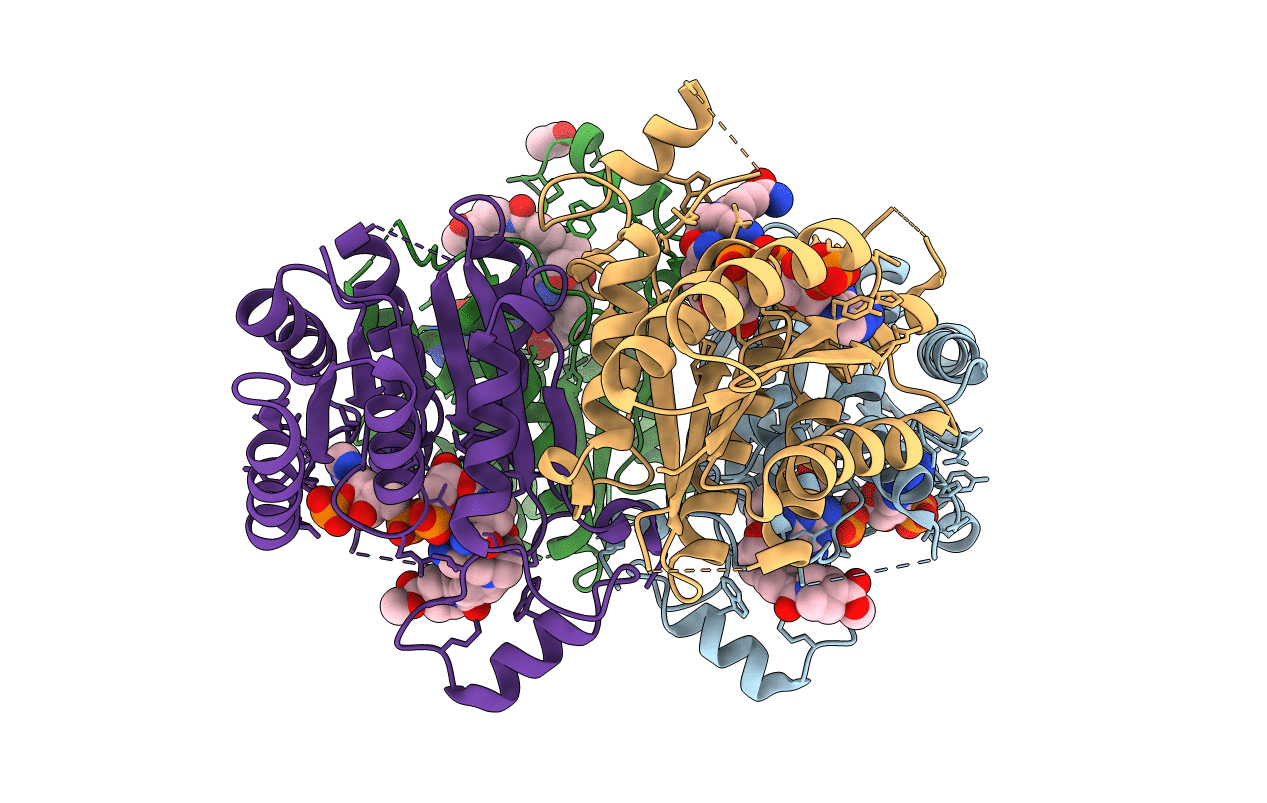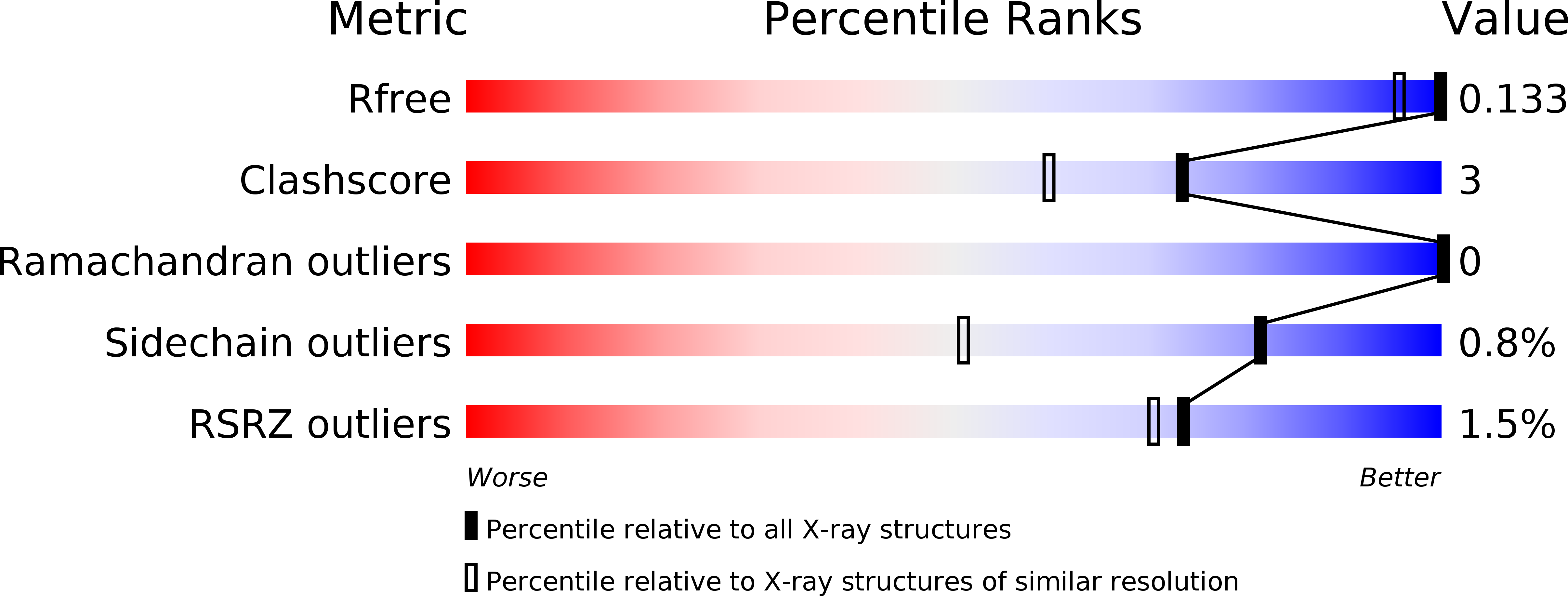
Deposition Date
2019-06-07
Release Date
2020-07-15
Last Version Date
2024-01-24
Entry Detail
PDB ID:
6RX6
Keywords:
Title:
Trypanosoma brucei PTR1 (TbPTR1) in complex with inhibitor 4 (NMT-C0026)
Biological Source:
Source Organism:
Trypanosoma brucei brucei (Taxon ID: 5702)
Host Organism:
Method Details:
Experimental Method:
Resolution:
1.11 Å
R-Value Free:
0.13
R-Value Work:
0.11
R-Value Observed:
0.11
Space Group:
P 1 21 1


